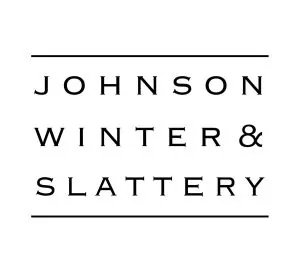Co-Author by Rebecca Proudman
ASIC and ASX have both announced temporary changes to their respective regulatory regimes to facilitate capital raisings for listed entities in response to the economic impact of COVID-19. As more entities seek the relief available under these changes, the effects, benefits and limitations of these measures are becoming clearer.
While ASX has indicated that relief applications need not be solely or predominantly for the purposes of raising capital to address the impact of COVID-19 on a company's business, our experience is that both ASIC and ASX are heavily scrutinising all applications and querying the appropriateness of an entity being granted the benefit of the relief.
As time goes on, we anticipate that more entities will be able to take advantage of the relief, as the direct impact of COVID-19 on individual businesses becomes more pronounced and companies are better placed to update financial forecasts and assess their capital raising requirements with greater certainty.
ASIC
On 31 March 2020, ASIC announced that it is granting companies additional time to assess their capital needs as a result of COVID-19 by extending the maximum period of suspension allowed for a company to conduct a 'low doc' offer. Such offers include rights offers, placements and share purchase plans (SPP).
A company that had been suspended from ASX for more than five days in the 12 months prior to undertaking a capital raising would usually need to prepare a prospectus or apply to ASIC for individual relief. ASIC is now allowing companies to make 'low doc' offers where the company has been suspended for up to 10 days in the 12 month period prior to making the offer (provided they were not suspended for more than 5 days in the period commencing 12 months before the offer and ending 19 March 2020).
This temporary measure provides companies with more fundraising flexibility as companies will be able to enter into a trading suspension in order to consider and analyse the impact of COVID-19 on its operations, without restricting the ability to rely on the low doc offer exception, which is a cheaper and more efficient capital raising option.
ASX
On 31 March 20201, ASX issued two class waivers granting relief in the following areas:
- Back to back trading halts
- A listed entity can request two consecutive trading halts providing a total of four trading days to consider and implement its capital raising strategy.
- If used in conjunction with ASIC's extended suspension period, this can provide a company with 14 trading days to assess and execute a capital raising.
- Increase in the 15% placement capacity under ASX Listing Rule
7.1 to 25%
- An entity can access placement capacity of 25% in a 12 month period subject to undertaking a follow-on entitlement offer or SPP offer.
- Entities that fall outside the ASX 300 and already have access to an additional 10% placement capacity under ASX Listing Rule 7.1A cannot rely on both the temporary 10% increase to the ASX Listing Rule 7.1 and their existing 10% capacity under ASX Listing Rule 7.1A.
- SPP restrictions waived
- ASX has temporarily waived the restrictions on the number of securities that may be issued under an SPP and the required issue price.
- If the SPP offer is preceded by a placement relying on the expanded 25% capacity, the SPP offer must occur at a price equal to or lower than the placement price. Otherwise, the SPP can be conducted at the price the directors of the entity reasonably determine.
- Waiver of one-for-one cap on non-renounceable entitlement
offers
- Entities can now choose a ratio for their non-renounceable entitlement offer that meets their capital raising needs and is fair and reasonable in the circumstances.
The latest versions of the class waivers can be found here.
Market response to temporary measures
While these changes should provide welcome relief to some companies and enable capital to be more readily obtained, the hard line approach being taken by ASIC and ASX when considering applications means some companies will be unable to take advantage of the modified regime. For example, we are aware that some issuers have decided to limit placements to 15% rather than seek to persuade ASX that they should have access to the relief.
While ASX has stated that an application to rely on the available relief need not be solely or predominantly for the purposes of raising capital to address the impact of COVID-19, if it considers the need to raise capital is not COVID-19 related or is not urgently needed, ASX will query the appropriateness of the entity benefiting from the class waivers. It should also be noted that ASX has the power to withdraw the benefit of relief from an entity at any time and for any reason.
Our experience with both ASX and ASIC is that companies must be able to clearly demonstrate that their need for capital, or their strategy for raising capital, has dramatically changed due to COVID-19. Until now, this has been difficult to substantiate in many instances given the unprecedented nature of COVID-19 and the difficulty in quantifying its impact. However, as time goes on, companies are likely to be able to assess the impact of COVID-19 on their business operations with more certainty, and therefore articulate stronger arguments to the regulators when seeking relief.
We recommend caution should be exercised when seeking ASIC and / or ASX relief. While relief is not expressed to be limited to COVID-19 raisings or emergency raisings, both regulators are exercising close supervision and scrutiny and therefore early consultation is advisable.
Footnotes
1 The class waivers were amended and reissued on 22 April and 23 April 2020.
The content of this article is intended to provide a general guide to the subject matter. Specialist advice should be sought about your specific circumstances.

